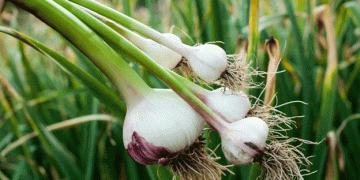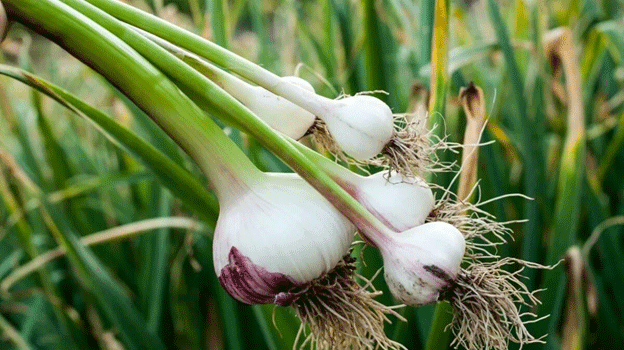Supply chain management in agriculture encompasses more than just production and distribution; it includes market factors, infrastructure, policy, and more. In Ninh Thuan, asparagus and garlic are among the 12 main agricultural products and are especially vulnerable to the common “good harvest, low price” phenomenon. Identifying and addressing risks specific to these crops can help build a more resilient supply chain, benefitting farmers, distributors, and consumers alike.
Identified Risks in the Asparagus and Garlic Supply Chains
1. Market-Related Risks
When asparagus cultivation started in Ninh Thuan, market prices were promising, often over 100,000 VND per kg. Garlic prices also soared, reaching up to 200,000 VND per kg in some cases. However, as production expanded both locally and in other regions, prices declined due to increased supply and competition from other varieties like Hai Duong and Ly Son garlic and imported garlic from China and India. This competitive market creates significant pricing pressure, often discouraging farmers from further investments in quality improvements and technology.
2. Infrastructure Challenges
The lack of robust infrastructure presents another risk. Agricultural products in Ninh Thuan are often transported 60 km to the Ba Ngoi port in Khanh Hoa for export, which delays delivery for perishable items like asparagus. Although the newly operational Trung Nam Ca Na port provides some relief, limited airport facilities further complicate logistics. Reliance on Cam Ranh Airport, 50 km away, adds to transportation challenges, affecting product freshness and market value.
3. Natural Conditions
Ninh Thuan’s dry climate poses unique challenges, with consistently low annual rainfall and high temperatures. A survey conducted with 155 households in October-November 2023 found that garlic yields have declined by 50-60% due to early-season rains, which led to fungal infections in garlic crops. Similarly, off-season rains in 2022 caused significant crop loss in asparagus due to fungal outbreaks. These extreme weather patterns threaten both quality and yield, impacting the supply chain’s stability.
4. Limited Financial Resources and Production Linkages
Agricultural businesses are scarce in Ninh Thuan, with fewer resources invested in high-tech agricultural practices. The few small- and medium-sized enterprises that do operate face challenges from climate variability and unstable markets, which discourage innovation and scale. Furthermore, the province lacks a robust agricultural information infrastructure to support market access, leading to fragmented production linkages and limiting the supply chain’s potential.
5. Policy and Coordination Issues
The province faces limitations in research and technology coordination to enhance asparagus and garlic production. Local farmers and businesses have limited interaction with research institutions, meaning that innovations in agricultural technology rarely meet the practical needs of stakeholders. This gap affects productivity and the overall competitiveness of these crops in the market.
Supply Chain Internal Risks
1. Food Safety Standards
Food safety is a notable vulnerability within Ninh Thuan’s asparagus and garlic supply chains. Although various agencies regulate the agricultural process, coordination between them is limited. For products to meet standards like VietGAP, tracking and monitoring systems need improvement to manage food safety risks effectively. This gap limits the export potential of asparagus and garlic to more demanding international markets.
2. Small-Scale Production
The fragmented agricultural land in Ninh Thuan prevents farmers from leveraging economies of scale. This small-scale production makes it difficult to implement advanced agricultural practices that could enhance efficiency and sustainability. Consolidating agricultural land or creating collective farming initiatives could help address these challenges, but policy changes and support are essential to facilitate such developments.
3. Undefined Roles and Responsibilities in the Supply Chain
An effective supply chain depends on well-defined roles and cooperative agreements. In Ninh Thuan, verbal agreements are common, which leaves participants without legal recourse in case of disputes. Establishing clear contractual relationships among stakeholders could provide a foundation for stability and mutual benefit within the supply chain.
Proposed Solutions
- Market Expansion: Establishing a broader market reach and investing in quality certification programs could enable Ninh Thuan’s garlic and asparagus to compete internationally.
- Infrastructure Development: Improving port facilities and exploring closer airport options could enhance the logistics network, allowing fresher produce to reach markets faster.
- Climate Adaptation Strategies: Supporting farmers with climate-resilient seeds, advanced irrigation, and crop monitoring technologies can help mitigate weather-related risks.
- Financial Support and Coordination: Attracting investment and fostering collaboration with agricultural technology providers could strengthen the supply chain.
- Clear Contracts: Legal contracts between supply chain members could improve accountability and reduce conflicts, fostering a more robust agricultural economy in Ninh Thuan.
Ninh Thuan’s asparagus and garlic supply chains face diverse challenges, from market volatility and climate impacts to infrastructure and policy constraints. By implementing strategic solutions focused on market diversification, infrastructure enhancement, and better stakeholder coordination, these supply chains can achieve resilience and growth. Through targeted policy changes and investments, Ninh Thuan can secure its place in both domestic and global markets.


































